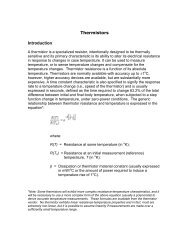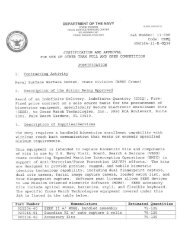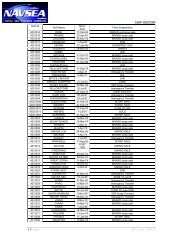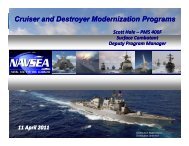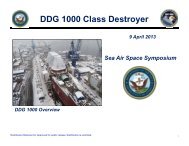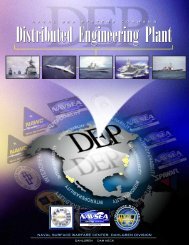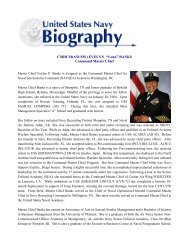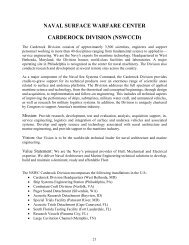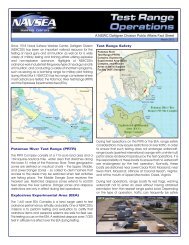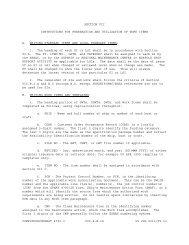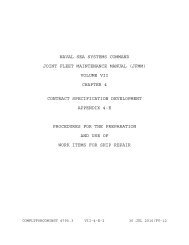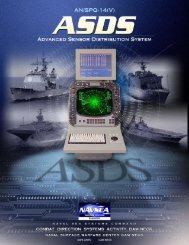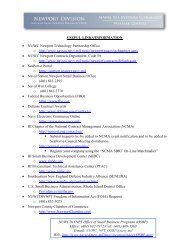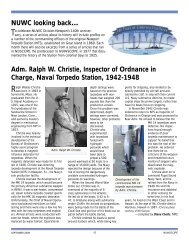Volume 6, Issue 1 - Naval Sea Systems Command - The US Navy
Volume 6, Issue 1 - Naval Sea Systems Command - The US Navy
Volume 6, Issue 1 - Naval Sea Systems Command - The US Navy
You also want an ePaper? Increase the reach of your titles
YUMPU automatically turns print PDFs into web optimized ePapers that Google loves.
SEAFRAME<br />
16<br />
Core equities<br />
ENVIRONMENTAL MONITORING (Continued from page 15)<br />
optimum channel depth that minimizes the amount of<br />
required dredging and affords the maximum number of days<br />
per year of accessibility or safe transits. <strong>The</strong> application<br />
is written in FORTRAN, with a graphical user interface<br />
written in the C++ language. It first calculates wave-induced<br />
motion based on the wave climatology at a specific location,<br />
calculates the risk of grounding for a range of dredge depths<br />
then determines the accessibility of the channel based on the<br />
number of days per year each wave condition occurs at the<br />
port. CADET has been so successful in its channel design<br />
abilities that it has been used to determine the required<br />
depths for the entrance channels to Yokosuka, Japan;<br />
Bahrain; Rota, Spain; and in the United States at Pensacola<br />
and Mayport, Fla. and Norfolk, Va.<br />
In the early 2000s, Carderock engineers,<br />
responding to a Corps of Engineers request for<br />
enhancements to the CADET tool, added a library<br />
of different commercial ship designs, including hull<br />
characteristics, ship geometries and associated response<br />
Left: An aerial view of the channel approach to Kings Bay. <strong>The</strong> channel<br />
is in the center and right center, and is about 11 miles in length.<br />
EMOGS uses wave measuring buoys and measured tide levels to<br />
assist harbor personnel in figuring whether the channel can permit<br />
the safe passage of ships.<br />
Photo provided by Andrew Silver, NSWC Carderock Division.<br />
Above: <strong>The</strong> <strong>US</strong>S Pennsylvania (SSBN 735), pictured here, was the first<br />
ship to transit the channel approach to Kings Bay using the EMOGS<br />
system to determine whether the channel could accommodate the<br />
ship’s draft.<br />
U.S. <strong>Navy</strong> photo.<br />
Left: <strong>The</strong> <strong>US</strong>S George Washington (CVN 73) moves past buildings in<br />
the downtown area of Norfolk, Va. CADET is a successful optimized<br />
channel depth prediction tool which helps such ships safely navigate<br />
port channels and is used in both domestic and global ports.<br />
U.S. <strong>Navy</strong> photo.<br />
amplitude operators, to expand the application’s<br />
flexibility in using data from multiple ship designs.<br />
CADET is now in the process of being adopted as the<br />
Corps of Engineers design tool determining the optimum<br />
depth for all the channels in the United States.<br />
Carderock Division has been instrumental in<br />
developing EMOGS and CADET to provide operational<br />
and design capabilities relative to entrance channel dredge<br />
depths which, in turn, saves precious budget funds for<br />
redirection to more immediate mission needs.<br />
Technical Point of Contact<br />
Andrew Silver<br />
andrew.silver@navy.mil<br />
301-227-5119 (DSN 287)<br />
Core Equity Leader, Hull Forms and Propulsors<br />
Jon Etxegoien<br />
jon.etxegoien@navy.mil<br />
301-227-1859 (DSN 287)



